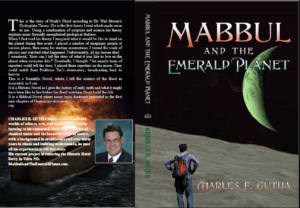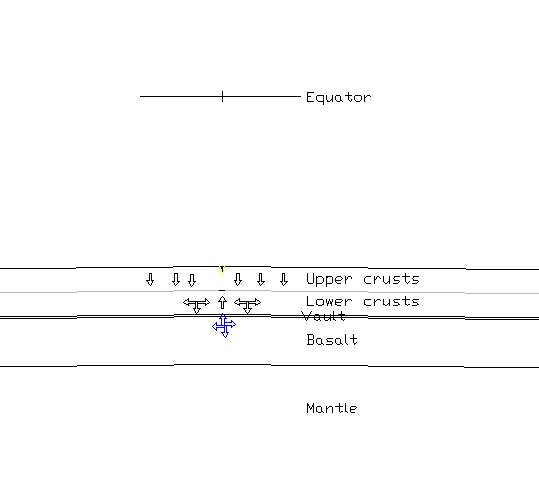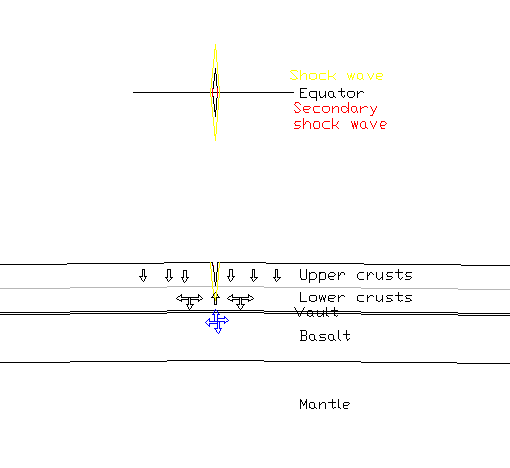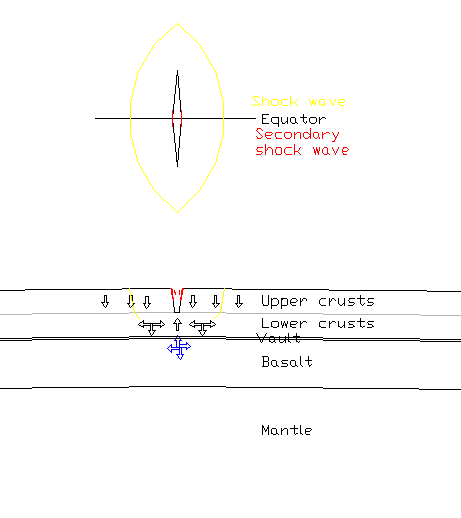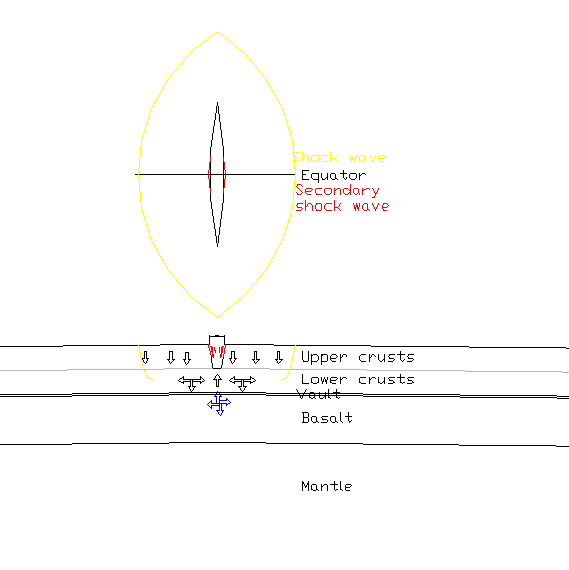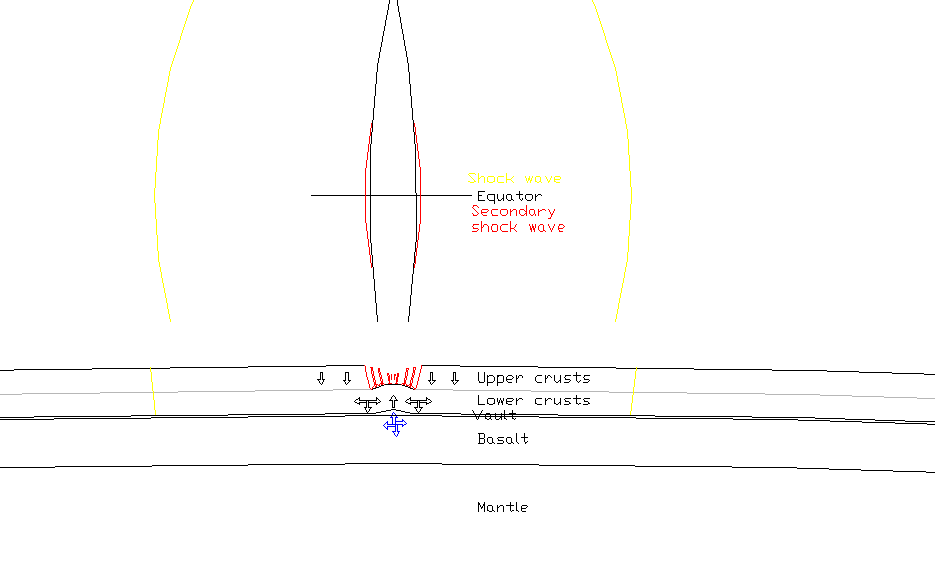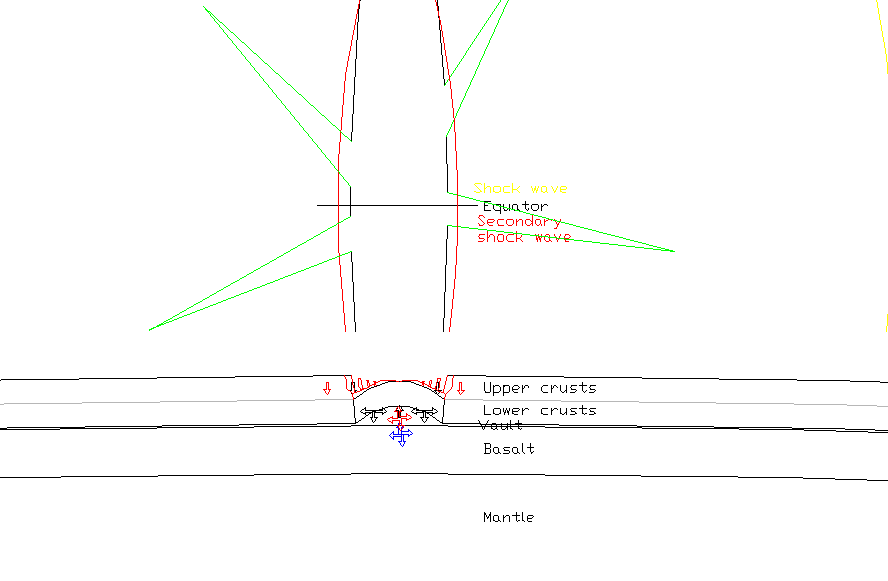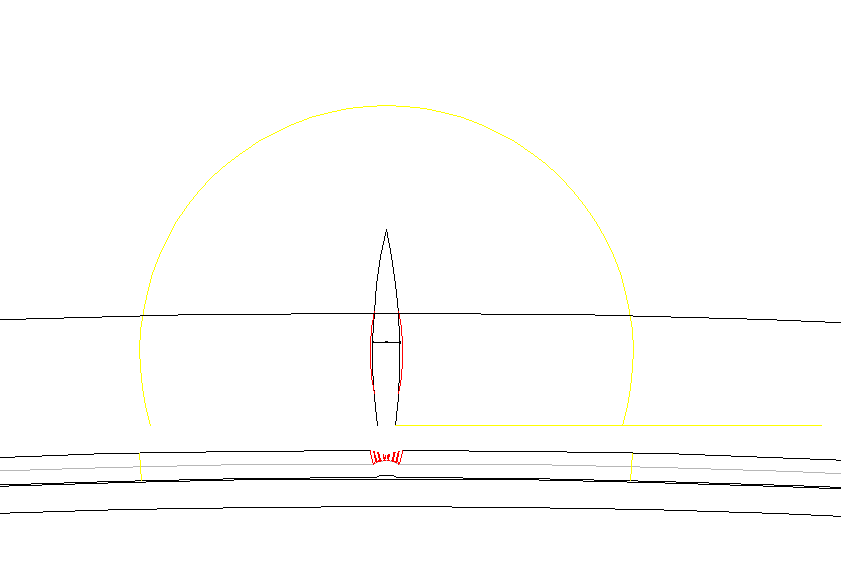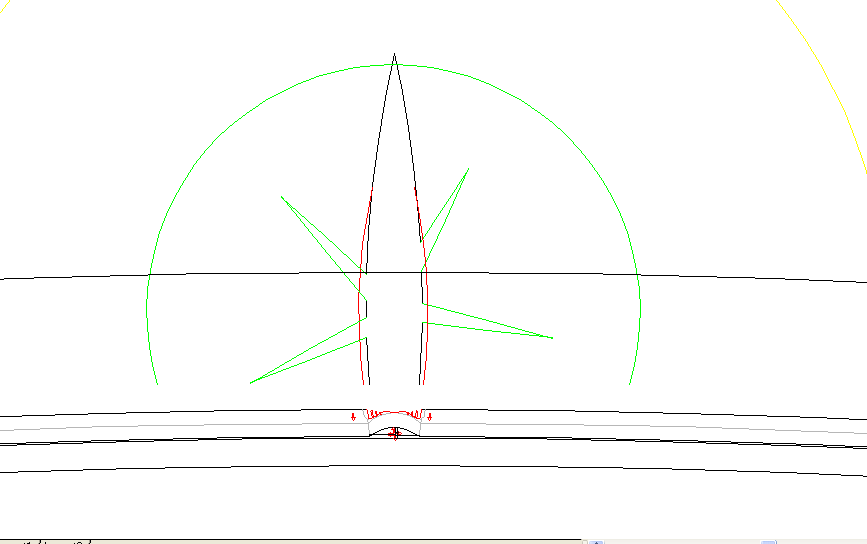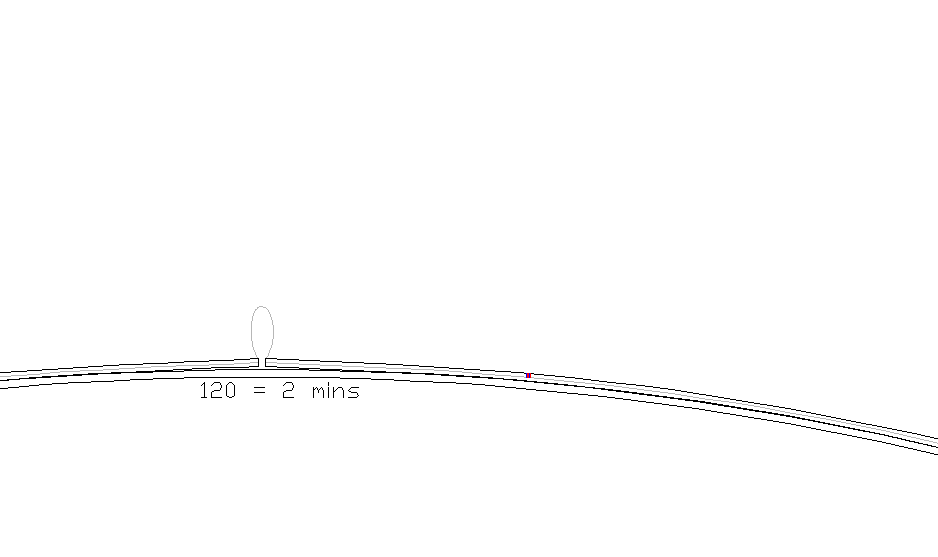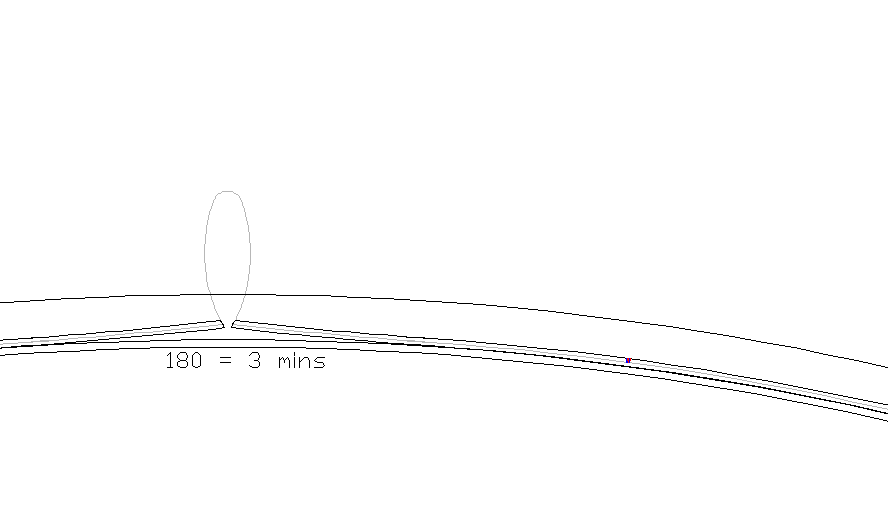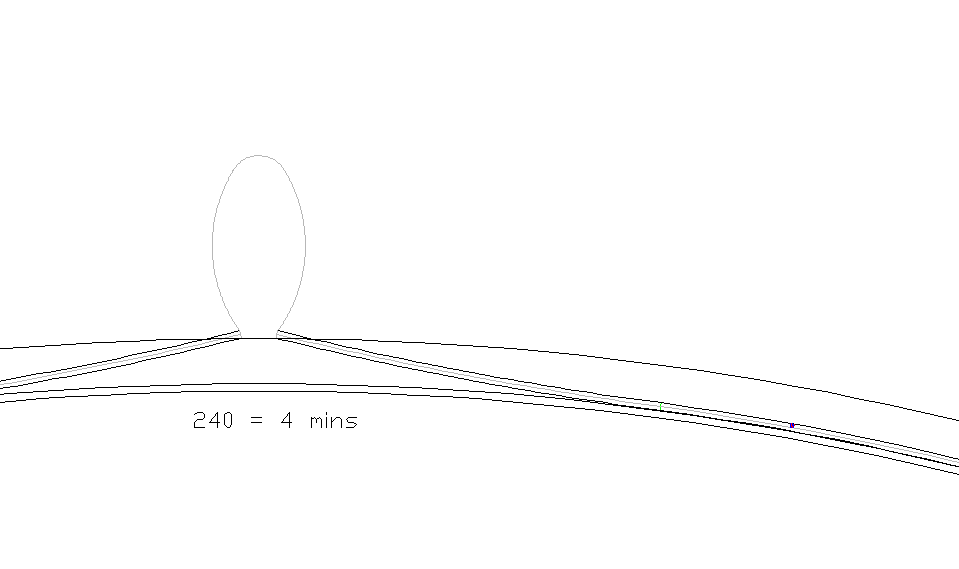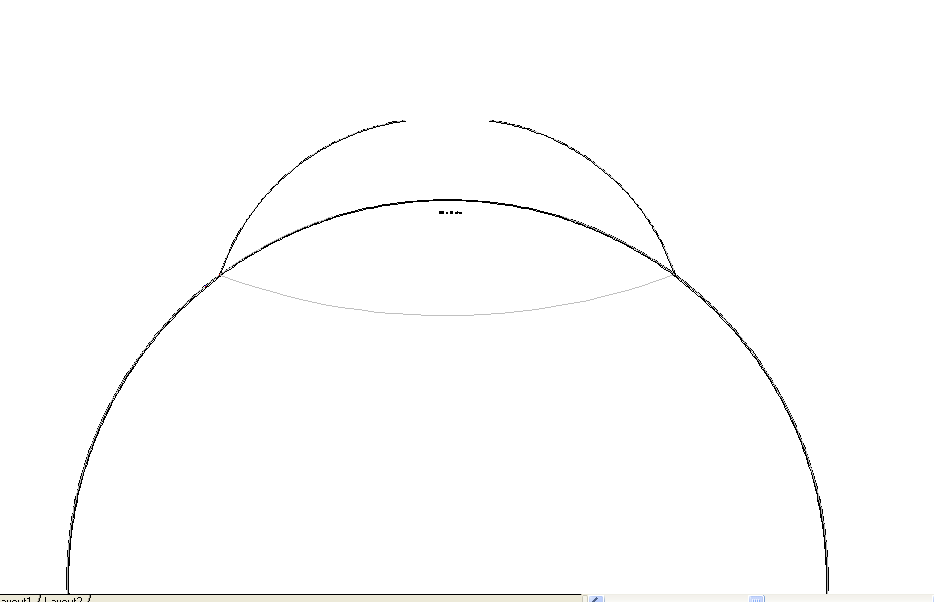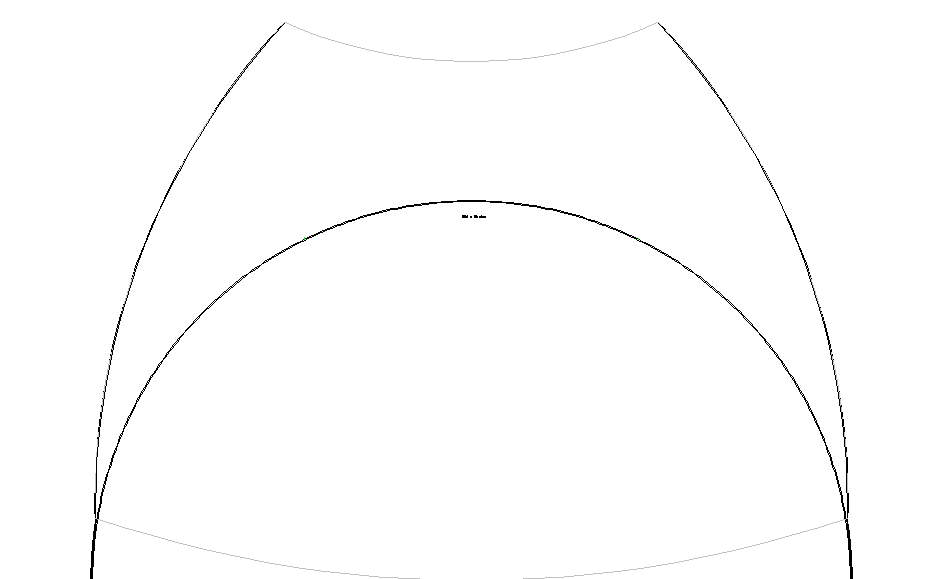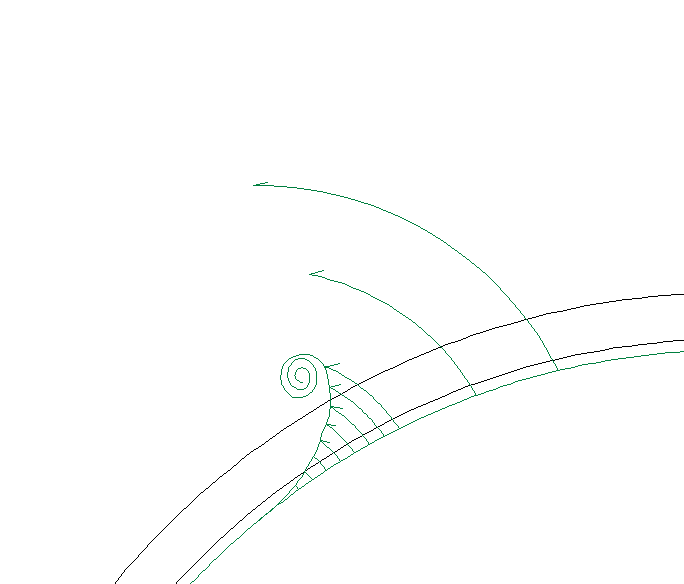Appendix D
Scenario #6
Panel 1: This first drawing shows the forces acting on the crust. The gravity of the crust pushes down. The pressure below five miles squeezes all cracks closed. The pressure in the vault acts in all directions including upward against the crust. The rotation of the earth stretches the crust at the equator about 23 miles. Note: boundaries are not exact.
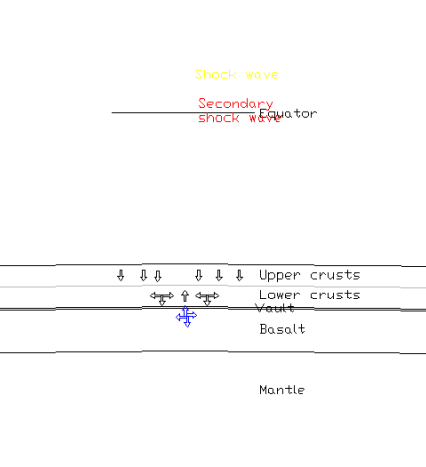
Stresses on the crust before the fracture
Panel 2: (1 Hairline crack) In this scenario a crack forms in the upper crest perpendicular to the equator.
Width: minimal Perhaps only 0.2 miles as the crust has not had time to retract.
Here you also see a possible overhead view. The shockwave is traveling twice as fast as the crack or 3 miles a second. This shatters the crust breaking the cohesive bond of the rock.
Panel 3: The crack travels north, south and down at 1.5 miles per second. It widens at the top as the crust relaxes from its stretched position. It is now to the depth of about five miles where the rock is plastic. Here the pressure of gravity prevents any cracks. Beyond this depth, the crust will sheer.
Panel 4: The crack widens. The deeper layers of rock fills the gap. The upper crust contracts, compresses and stretches. This causes a great primary earthquake with various harmonics shattering the crust along the edge of the crack (red) creating falling rocks. These loose rocks fall into the crevice.
Panel 5: At ten seconds, the crust continues to pull back. The deeper layers of crust flow quicker to fill the void.
Note the 60 mile-diameter shockwaves reducing the tensile strength of the crust. There is now enough pressure below to burst the crust in any direction.
Panel 6: After thirty seconds, the fundamental crack is ninety miles long, perhaps 9 miles wide. The lower layers are beginning to travel upward under the reduced pressure. Rocks are falling from its side making the crust wider. The shockwave is 180 miles in diameter.
Panel 7: As the crack widens, the bulge increases. The pressure beneath it is now three times the force of gravity.
The crust within the shockwave is pulsing with harmonics in compression and expansion. This adds to the ease with which the vault fluids begin to escape.
Panel 8: The upper layers continue to contract, widening the gap. The lower layers, are squeezed, moving into the gap then forced out by the 32 tons per square inch carbonated salt/mineral water.
Forty-two tons per square inch will provide a force ripping apart tens of miles of granite every second.
It was while drawing the parent of this picture that I realized the result would not be a 2 dimensional separation of the crust, but a violent explosion ripping away a large portion of Earth’s surface. In the rendering above, you can see multiple cracks reduce the crust to boulders and rocks. With 42 tons of pressure per square inch under it these rocks would move leaving a small hole in the crust. Large chunks of granite would subsequently blow into the air releasing more energy.
The crust would snap back, but time is a factor. It takes an hour and a half for the shockwave to travel around the Earth. The 24-mile relaxation would take longer. The result is an accordion effect as the crust slowly widens. These harmonics would cause terrific damage.
As the crust vibrates over the hole, (the crust has lost its strength where it is vibrating). The water in the vault, already moving, will create pulses of crust being blown away.
Appendix E
The 9 Charts
– Crater Theory –
At 30 seconds: the cracks have traveled 45 miles.
In one minute’s time, the cracks have traveled 90 miles. This color scheme is not the one used on the remote. Here the yellow circle is the extent of the shockwave. Note the scale of these drawings are the same.
In two minutes, the cracks have destroyed a 360 mile diameter of Earth (the radius is 180 miles). What town is 180 miles from you?
At some point, the retraction of the crust will change direction. Instead of snapping away from the hole, it will return over the already escaping water. This will cause a pulsation of rocks and pressure that will travel faster than if there were no pulsation.
In three minutes, fragments of the bulge are still accelerating. By now, many pieces are traveling faster than seven miles per second (the escape velocity of earth). The height could be 190 miles while the cracks have only extended over 270-mile radius. How far away can this be seen? 1200 miles.
Four minutes, 360 mile dia. Parts of the crust near the initial blast are now past the stratosphere. The pressure beneath the crust is diminishing slightly.
Five minutes, 900-mile diameter. How far is Chicago from New York?
Ten minutes
Fifteen minutes
At thirty minutes, a large portion of the surface is blown away.
Another theory, the rock buildup theory
Representation of the wind currents and crust accumulation: height exaggerated. After thirty minutes, the pressure inside the blast area has started to diminish. The pressure is pushing out as well as up. As the force pushes out, debris will accumulate along the perimeter of the crater. The extra weight will eventually halt the craters growth. After one half hour, one third of Earth’s crust is blown away. This is nearly the size of the Pacific Ocean.
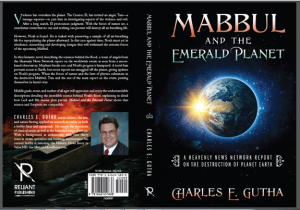
Previous page: Hydroplating and Recovery
Next appendix: Appendix F: Metric Equivalence
